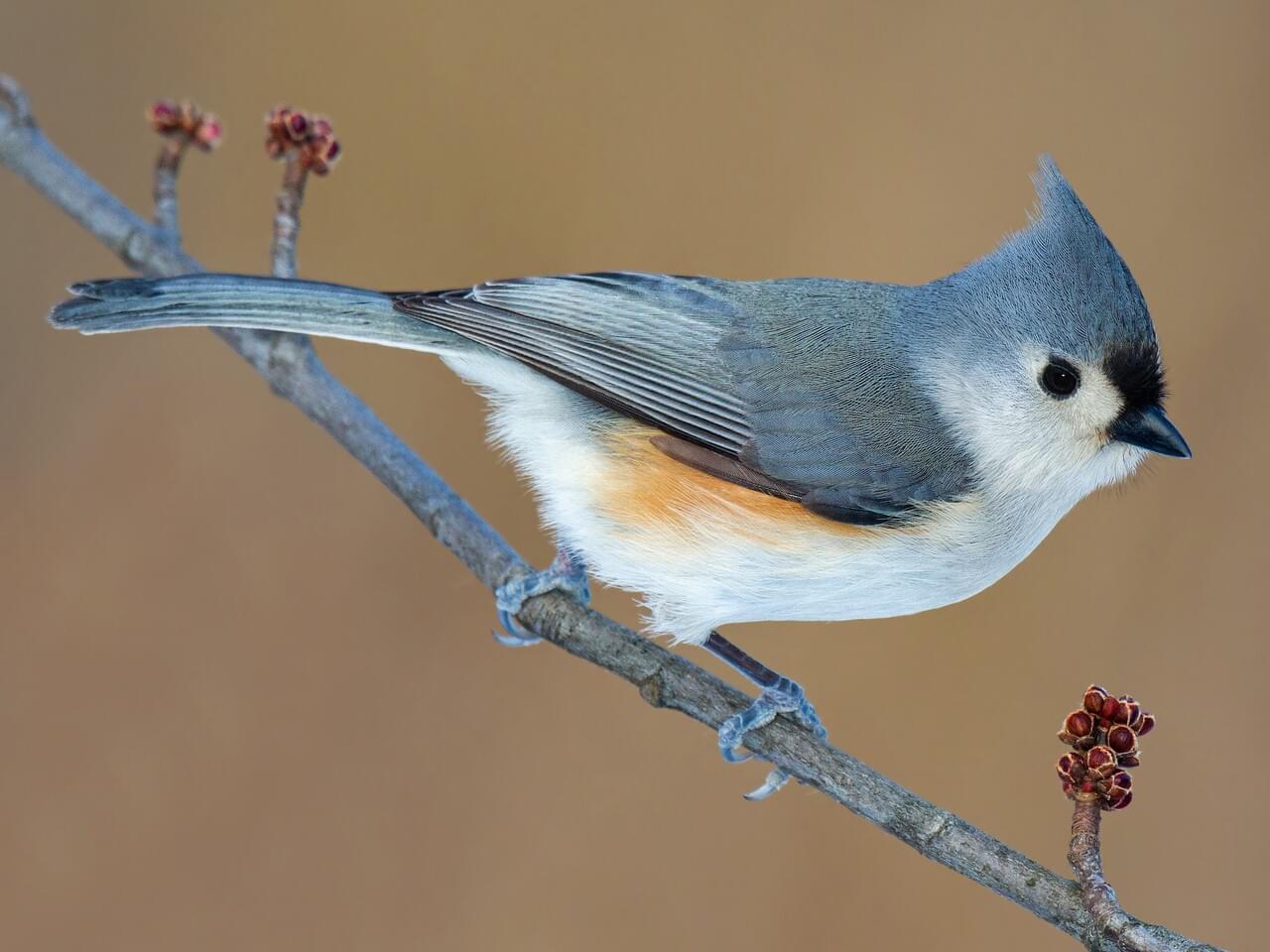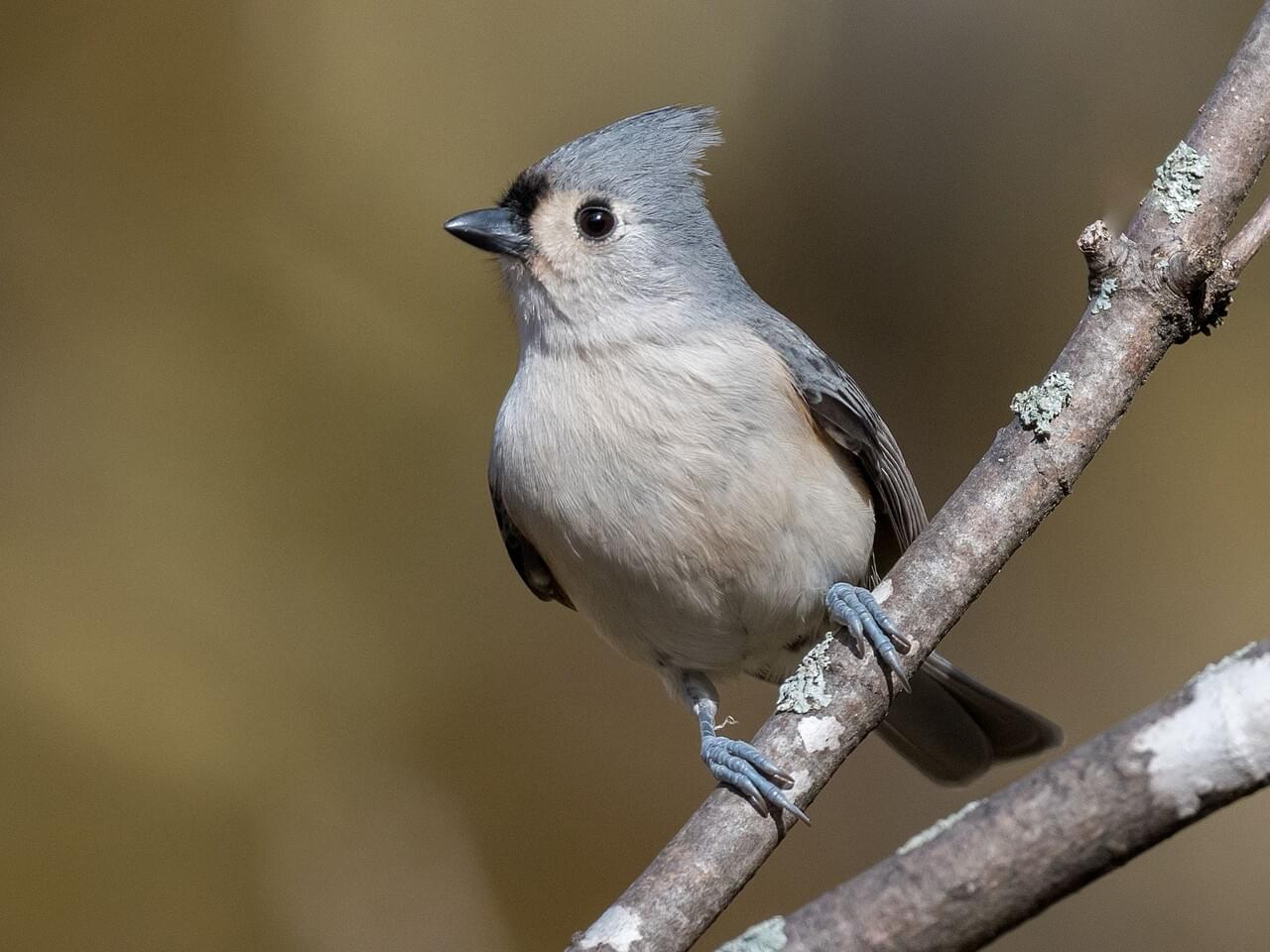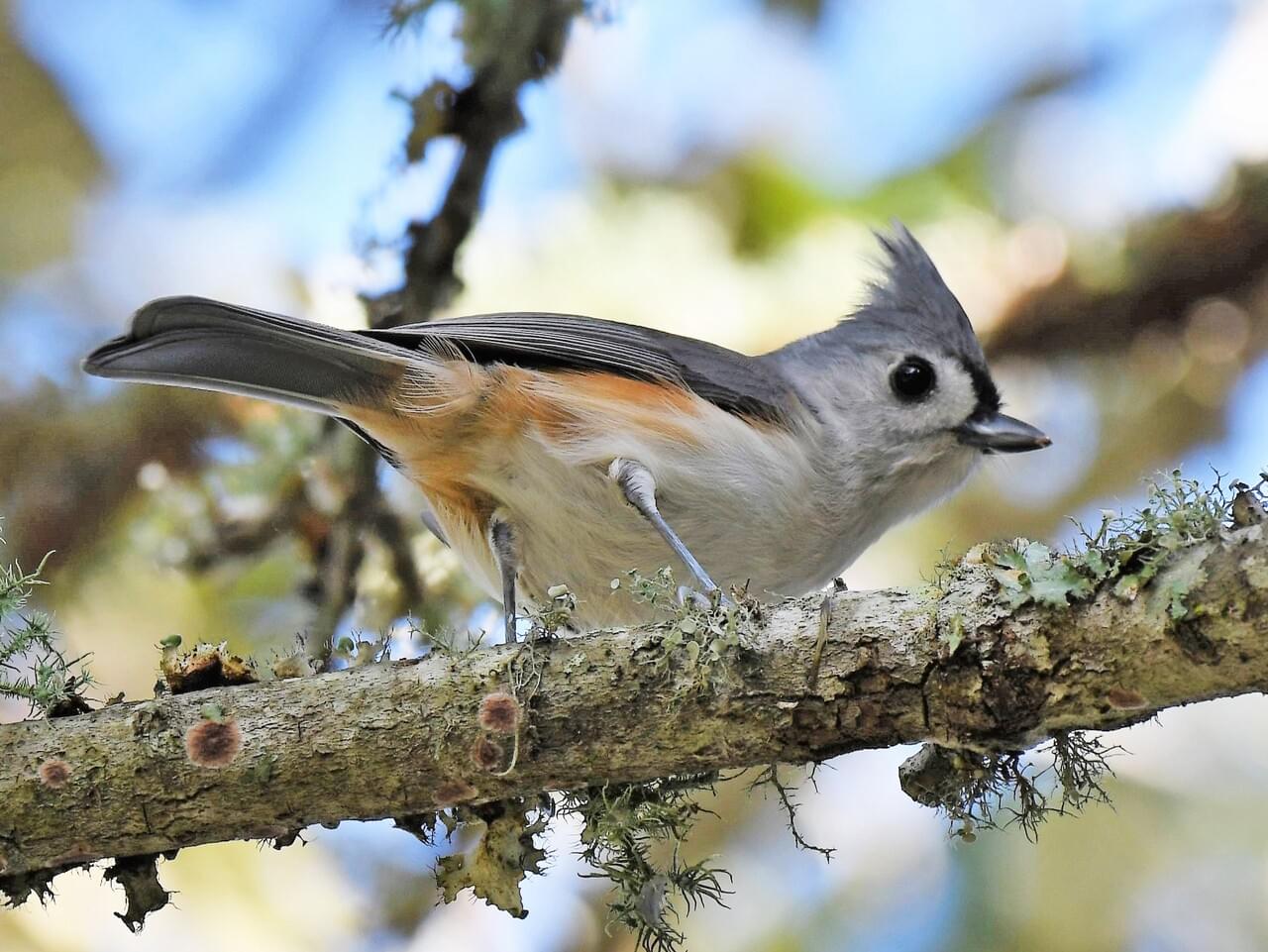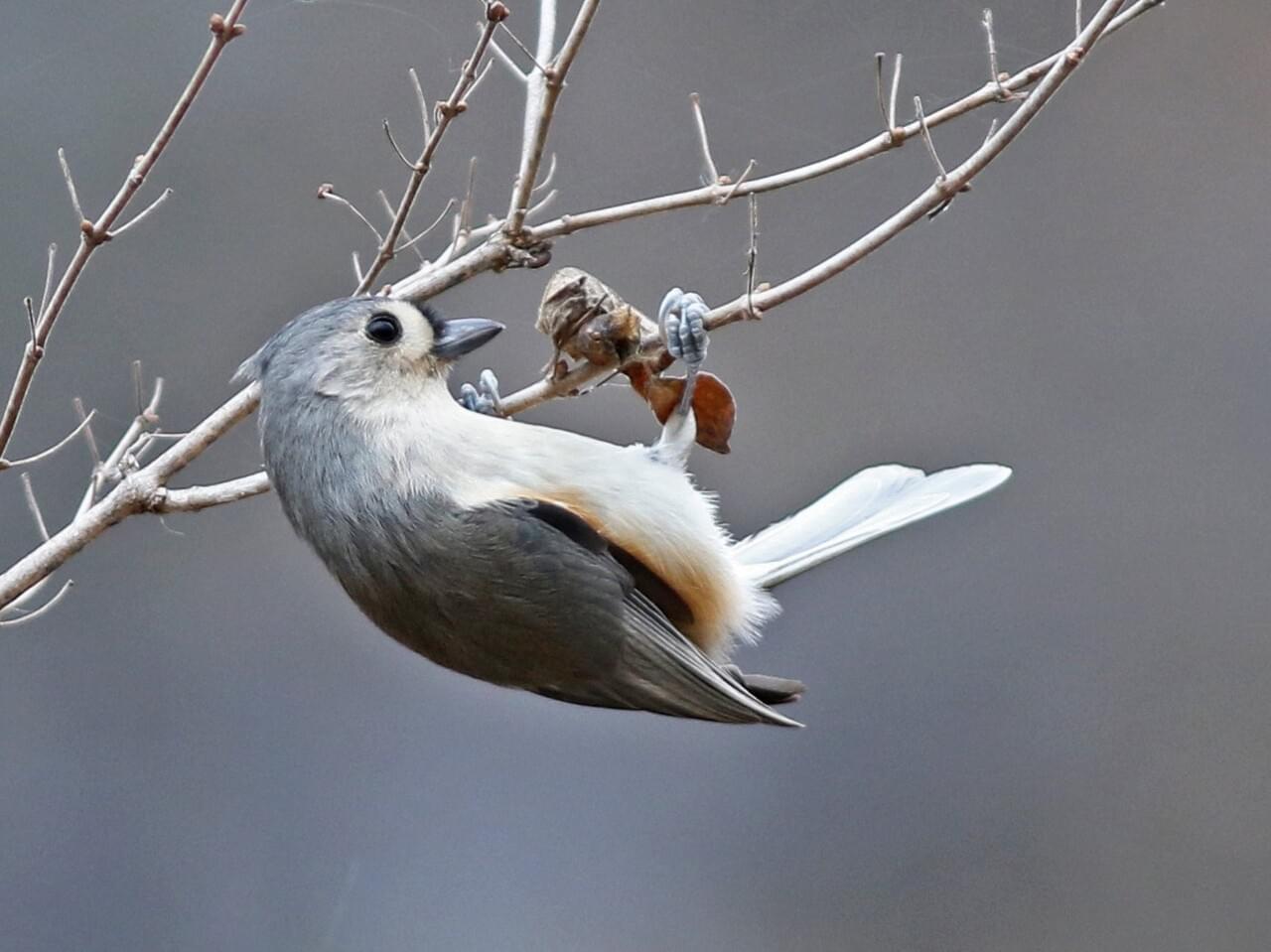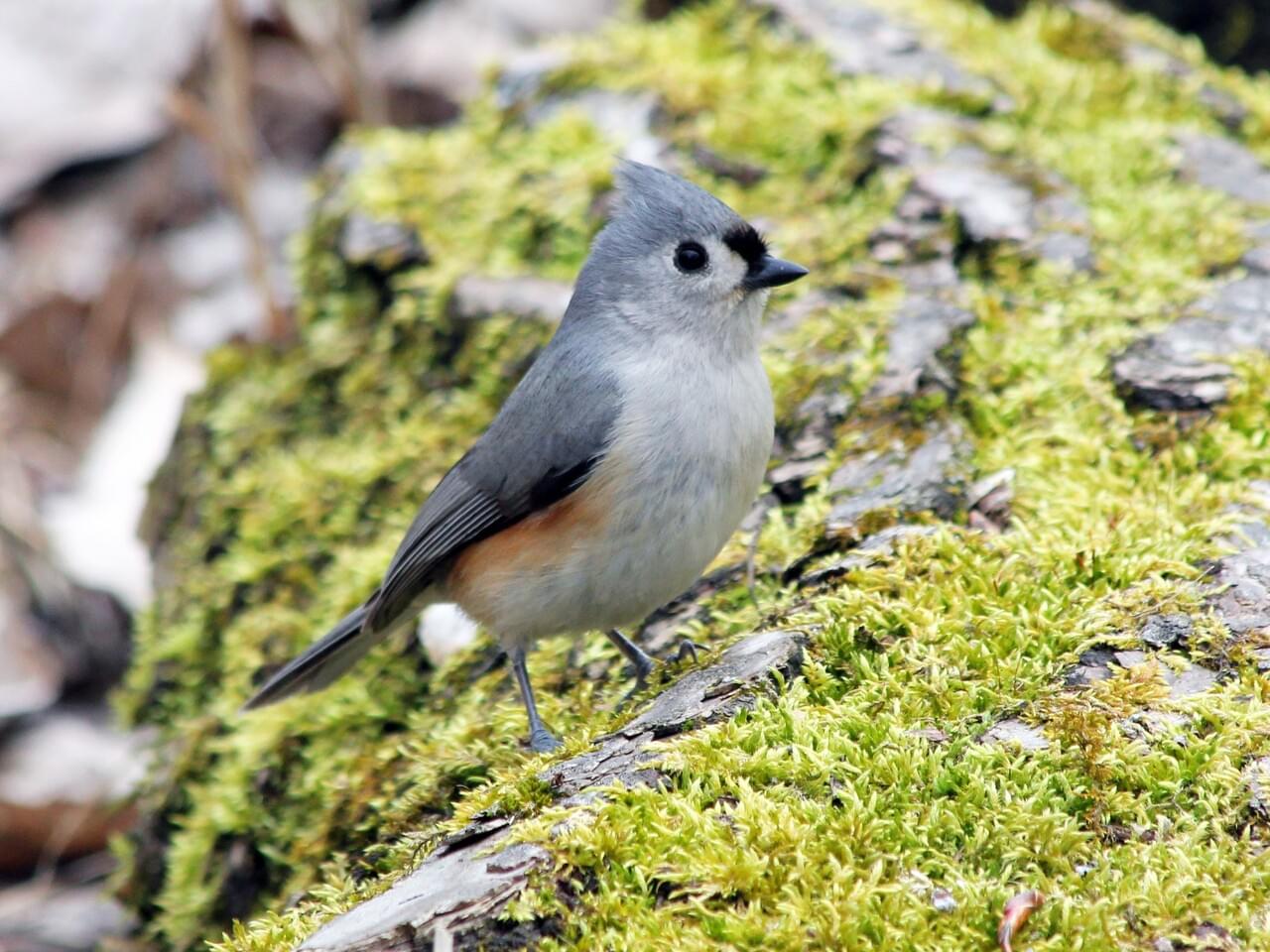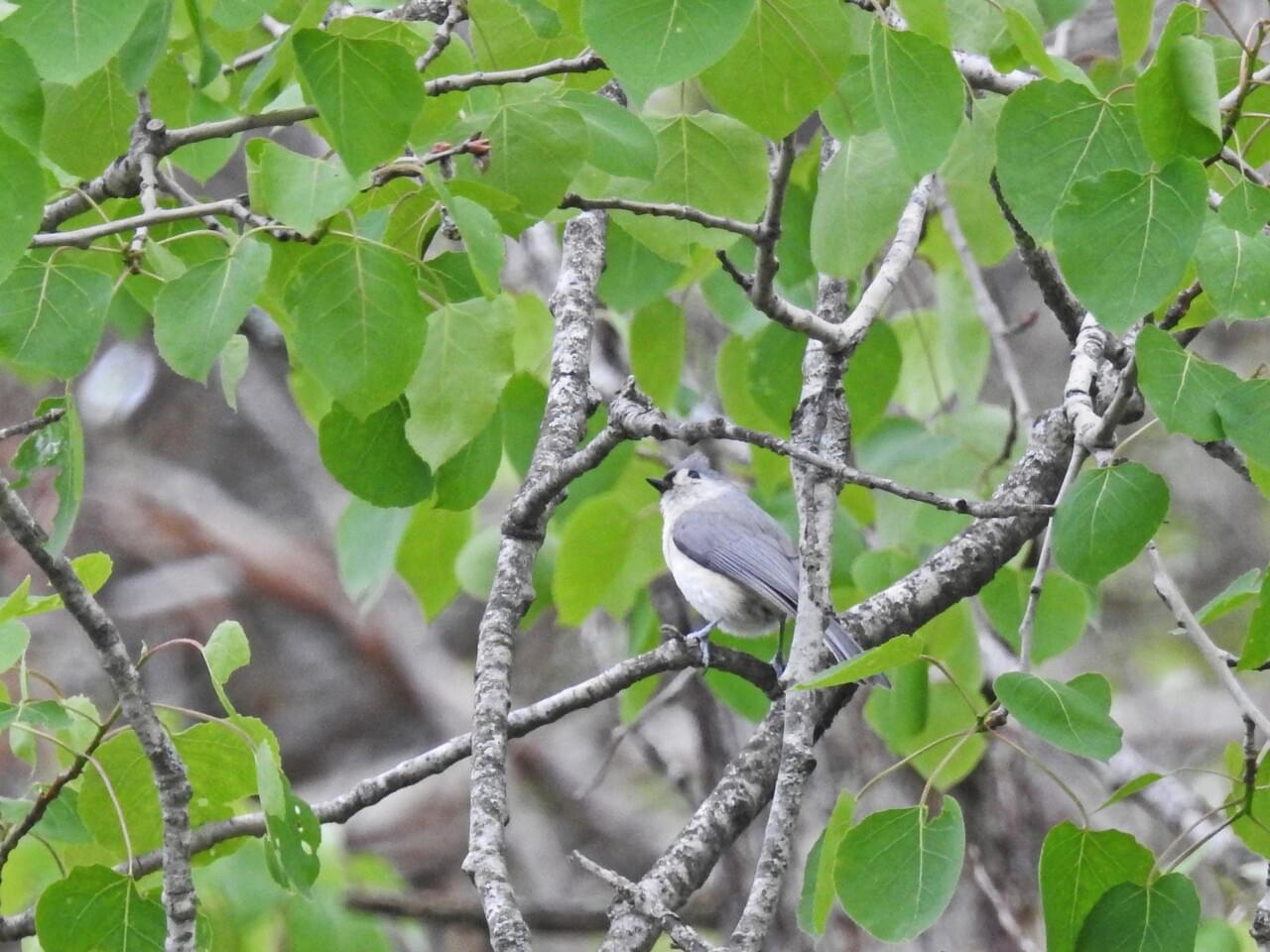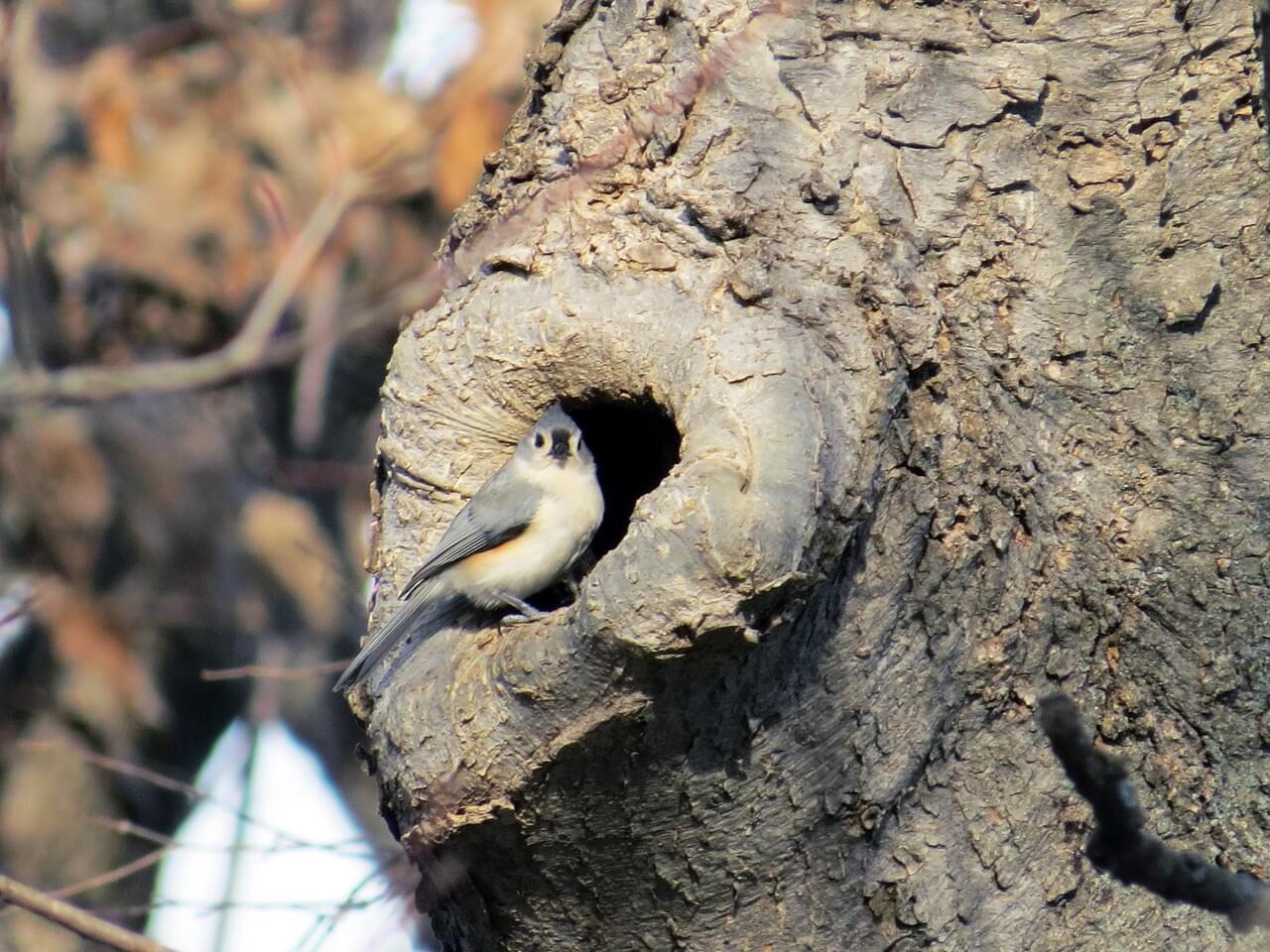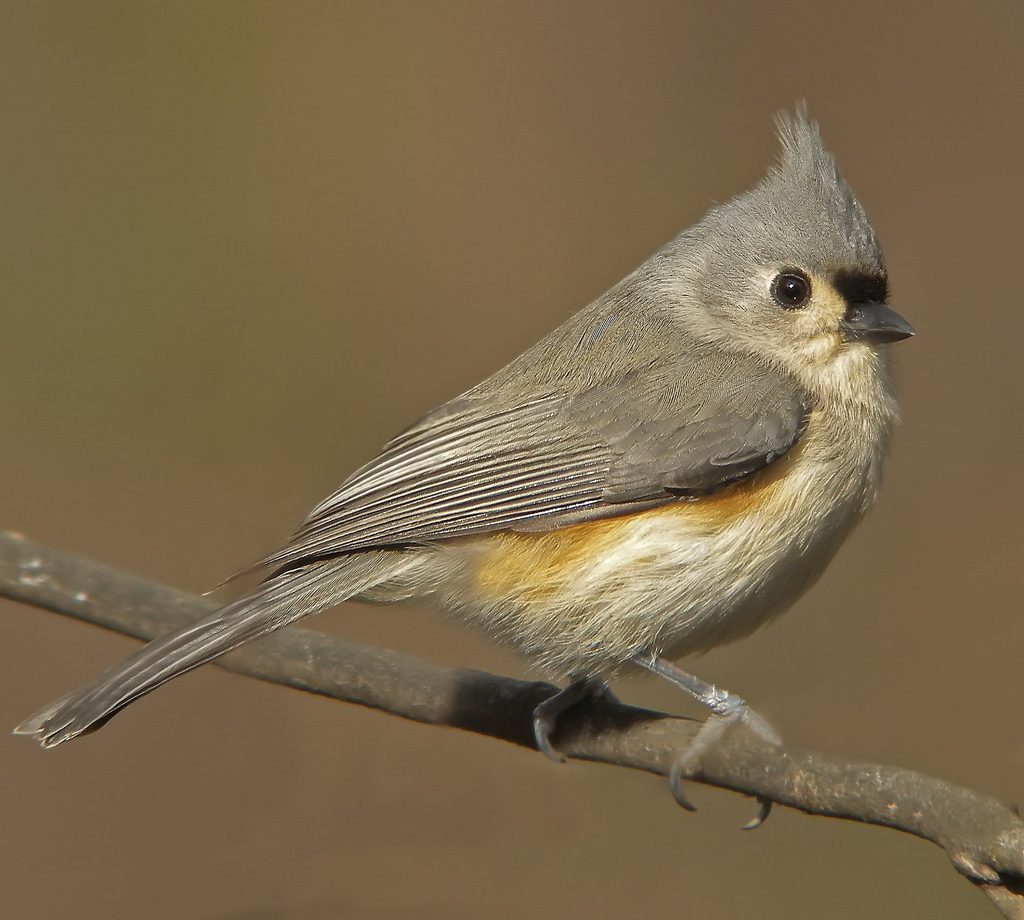 Photo ©
Kevin Bolton
Photo ©
Kevin Bolton
Tufted Titmouse
Regional Species
A little gray bird with an echoing voice, the Tufted Titmouse is common in eastern deciduous forests and a frequent visitor to feeders. The large black eyes, small, round bill, and brushy crest gives these birds a quiet but eager expression that matches the way they flit through canopies, hang from twig-ends, and drop in to bird feeders. When a titmouse finds a large seed, you’ll see it carry the prize to a perch and crack it with sharp whacks of its stout bill.
Range
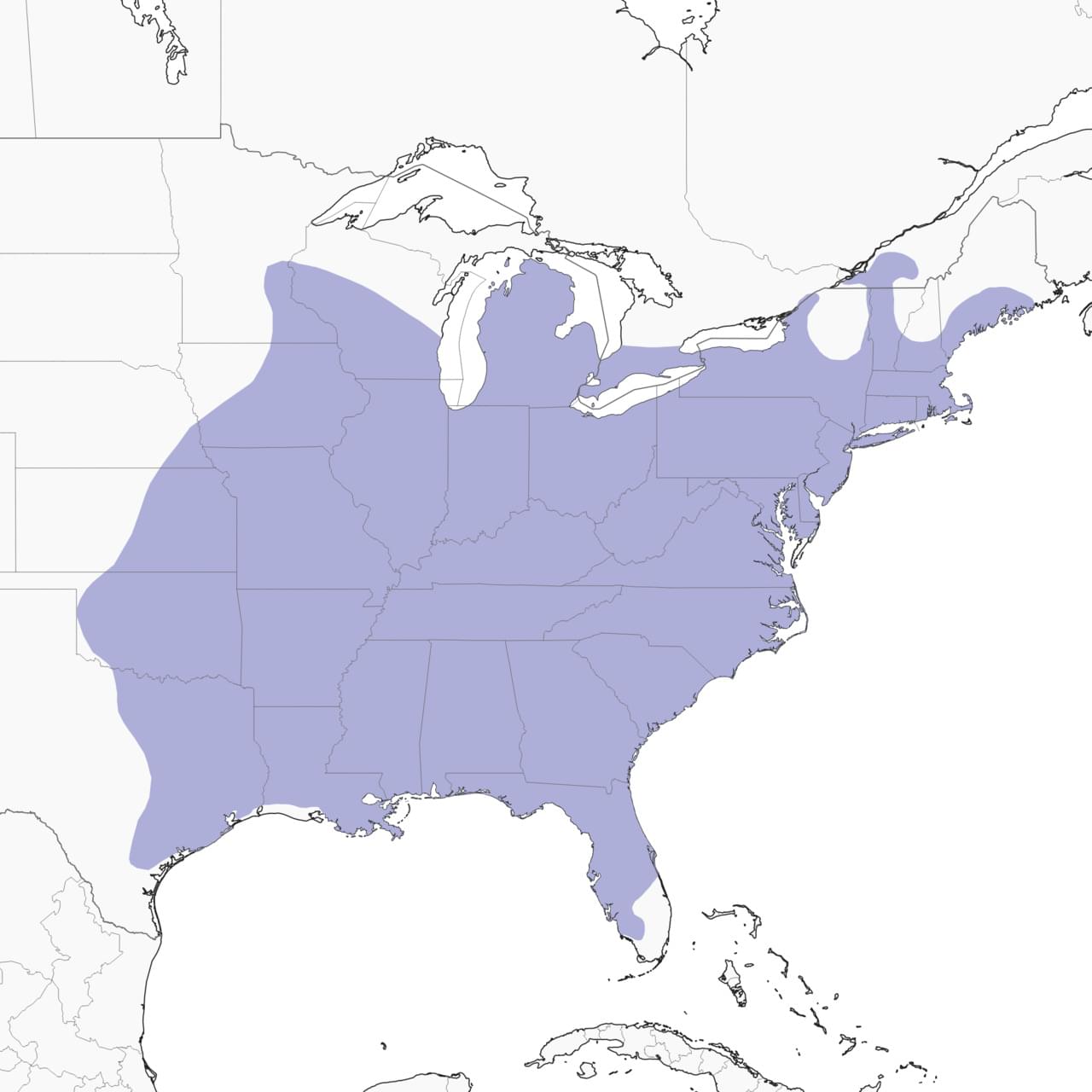
Habitat
Tufted Titmice live in deciduous woods or mixed evergreen-deciduous woods, typically in areas with a dense canopy and many tree species. They are also common in orchards, parks, and suburban areas. Generally found at low elevations, Tufted Titmice are rarely reported at elevations above 2,000 feet.
Food
Tufted Titmice eat mainly insects in the summer, including caterpillars, beetles, ants and wasps, stink bugs, and treehoppers, as well as spiders and snails. Tufted Titmice also eat seeds, nuts, and berries, including acorns and beech nuts. Experiments with Tufted Titmice indicate they always choose the largest seeds they can when foraging.
Behavior
Tufted Titmice flit from branch to branch of the forest canopy looking for food, often in the company of other species including nuthatches, chickadees, kinglets, and woodpeckers. When they find large seeds, such as the sunflower seeds they take from bird feeders, titmice typically hold the seed with their feet and hammer it open with their beaks. In fall and winter they often hoard these shelled seeds in bark crevices. These acrobatic foragers often hang upside down or sideways as they investigate cones, undersides of branches, and leaf clusters. They sometimes come all the way to the ground to hop around after fallen seeds or insects. Titmice are very vocal birds and are also quick to respond to the sounds of agitation in other birds, coming close to investigate or joining a group of birds mobbing a predator.
Nesting
Titmice build cup-shaped nests inside the nest cavity using damp leaves, moss and grasses, and bark strips. They line this cup with soft materials such as hair, fur, wool, and cotton, sometimes plucking hairs directly from living mammals. Naturalists examining old nests have identified raccoon, opossum, dog, fox squirrel, red squirrel, rabbit, horse, cow, cat, mouse, woodchuck, and even human hair in titmouse nests. Nest construction takes 6 to 11 days.
Appearance
Typical Sound

© Brad Walker / Macaulay Library
Size and Shape
Tufted Titmice look large among the small birds that come to feeders, an impression that comes from their large head and eye, thick neck, and full bodies. The pointed crest and stout bill help identify titmice even in silhouette.
Color Pattern
Soft silvery gray above and white below, with a rusty or peach-colored wash down the flanks. A black patch just above the bill makes the bird look snub-nosed.
Plumage Photos
Similar Species
The Black-crested Titmouse of central Texas has a white forehead and fully black crest compared with Tufted Titmouse's black forehead and gray crest. Chickadees are slightly smaller, lack the crest, and have bold black-and-white head, cheeks, and throat. The Oak and Juniper titmice of the western United States don't overlap in range with Tufted Titmouse. They are smaller and plainer brown.
Did you know?!
- Tufted Titmice nest in tree holes (and nest boxes), but they can’t excavate their own nest cavities. Instead, they use natural holes and cavities left by woodpeckers. These species’ dependence on dead wood for their homes is one reason why it’s important to allow dead trees to remain in forests rather than cutting them down.
- Unlike many chickadees, Tufted Titmouse pairs do not gather into larger flocks outside the breeding season. Instead, most remain on the territory as a pair. Frequently one of their young from that year remains with them, and occasionally other juveniles from other places will join them. Rarely a young titmouse remains with its parents into the breeding season and will help them raise the next year's brood.
